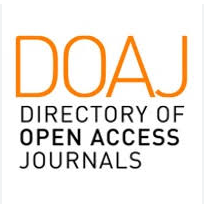Regional Disparities in Hungary - Links With External Trade Tendencies and Economic Performance
Abstract
The main objective of the study is to show how regional disparities have evolved in Hungary between 2000 and 2021. For this purpose, the authors use the most important indicators available in the literature: the Hoover index, the weighted relative standard deviation and the Theil index. Our initial assumption was that the widening and levelling of inequalities alternated in certain periods, and the results of the indicators confirm this. In addition to this, we have also investigated how the process of territorial levelling is presumably related to Hungary's performance in the national economy and in foreign trade. For this purpose, we considered the relative economic growth gap with the region, as well as the indicators of trade ratio and trade balance. Our results show that the relatively poor performance of the national economy and the relatively higher trade deficit have had a negative impact on territorial balancing.
The links between the evolution of regional disparities and national economic performance can of course be complex and variable. In general, however, more developed regions have higher GDP and living standards than less developed regions.
In practice, the external trade balance can also affect regional disparities, as different forms of economic activity depend to different degrees on external trade flows. Changes in supply and demand factors in economies and price levels can also affect the distribution of trade and economic activity between regions.
The overall conclusion is that favourable international trade conditions can promote more equal development between regions, while the opposite trends hinder economic convergence.
References
Alpek, B. L. & Tésits, R., 2019. A foglalkoztatás mérési lehetőségei és térszerkezete Magyarországon. Területi Statisztika, 59(2), 164-187. https://doi.org/10.15196/TS590402
Benedek, J. 2021. Regionális egyenlőtlenség és gazdasági felzárkózás. magyarországi és romániai régiók összehasonlító vizsgálata. Észak-magyarországi Stratégiai Füzetek, 18(1), 4-14. https://doi.org/10.32976/stratfuz.2021.15
Bessenyei, I. & Győrfy L. 2014. Térgazdasági struktúrák és regionális egyenlőtlenségek. Közgazdász Fórum, 17, 180-204.
Dusek, T. & Kotosz, B., 2016. Területi statisztika. Budapest, Akadémiai Kiadó.
Garami, E., 2009. A humán erőforrás területi különbségei. Területi Statisztika, 49(12), 280-298.
Kollárik, F., 2020. Magyarország, Csehország és Szlovákia regionális és makrogazdasági konvergenciája az EU-csatlakozás előtt és után. Európai Tükör: Az Integrációs Stratégiai Munkacsoport kéthavonta megjelenő folyóirata, 23(2). 99-115. http://doi.org/10.32559/et.2020.2.5
Kónya, I., 2019. Külkereskedelem, regionális különbségek és a képzettek vándorlása. Közgazdasági Szemle, 66(6), 635-652. http://doi.org/10.18414/KSZ.2019.6.635
Kisiala, W. & Suszynska, K., 2017. Economic growth and disparities: an empirical analysis for the Central and Eastern European countries. Equilibrium. Quarterly Journal of Economics and Economic Policy, 12(4), 613-631. https://doi.org/10.24136/eq.v12i4.32
Lengyel, I. & Kotosz B., 2018. Felzárkózás és/vagy távolságtartó követés?A visegrádi országok térségeinek fejlődéséről. Tér és Társadalom, 32(1), 5-26. https://doi.org/10.17649/TET.32.1.2910
Major, K. & Nemes Nagy, J., 1999. Területi jövedelemegyenlőtlenségek a kilencvenes években. Statisztikai Szemle, 77(6), 397-421.
Molnár T., 2015. Empirikus területi kutatások. Budapest, Akadémiai Kiadó.
Neszmélyi, Gy., Lampertné Akócsi, I. & Bruder, E., 2016. A Williamson-hipotézis teljesülésének vizsgálata az Európai Unióban és a Visegrádi országokban. Gazdaság és Társadalom, 8(4), 83-99. http://doi.org/10.21637/GT.2016.4.05.
Pénzes, J., Kiss, J.P., Deák A. & Apáti, N., 2018. Térségi sokszínűség és stabilitás: az iskolázottság települési szintű egyenlőtlenségeinek változása Magyarországon 1990-2011 között. Területi Statisztika, 58(6), 567-594 https://doi.org/10.15196/TS580602
Rechnitzer, J. & Smahó, M., 2011. Területi politika. Budapest, Akadémiai Kiadó.
Rechnitzer, J., 2022. Néhány iránymutatás Kelet- és Közép-Európa nagyvárosainak tanulmányozásához. Észak-magyarországi Stratégiai Füzetek, 19(3), 14-26. https://doi.org/10.32976/stratfuz.2022.32
Smetkowski, M. 2013. Regional Disparities in Central and Eastern European Countries: Trends, Drivers and Prospects. Europe-Asia Studies, 65(8), 1529-1554. https://doi.org/10.1080/09668136.2013.833038
Szabó, P. 2008. A gazdasági fejlettség egyenlőtlensége az Európai Unió különböző területi szintjein. Területi Statisztika, 48(6), 687-699.
Tánczos, T., 2007. Magyarországi megyék társadalmi és gazdasági fejlettségének vizsgálata. Acta Academiae Pedagogicae Agriensis Nova Series: Acta Oeconomica, (8) 8-16.
Vedrine, L. & Le Gallo, J. 2021. Does EU Cohesion Policy affect territorial inequalities and regional development? EU Cohesion Policy and Spatial Governance: Territorial Social and Economic Challeneges. London, Edward Elgar Publishing.
Zsibók, Zs., 2019. Minden marad a régiben? Regionalizált növekedési pályák Magyarországon. Területi Statisztika, 59(3), 247-272. https://doi.org/10.15196/TS590301


























